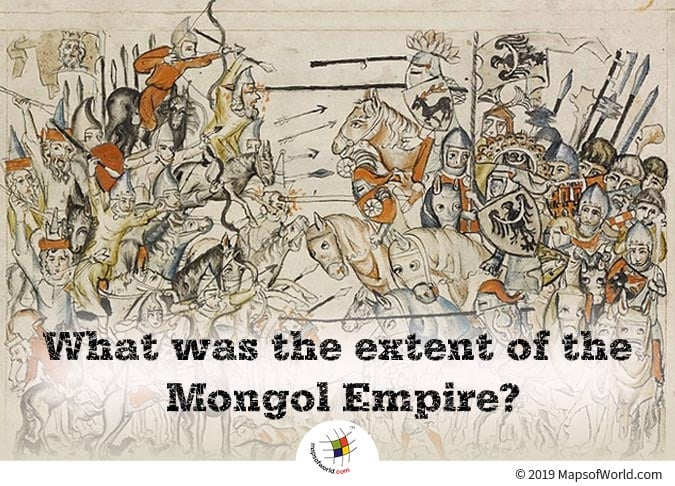

The Mongol Empire stretched from the Sea of Japan right across Central Asia to Eastern Europe.
The Mongol Empire that existed between the 13th and 14th centuries was the largest contiguous land empire of the world ever. Founded by Genghis Khan in 1206, the Mongol Empire originated in Mongolia (East Asia). It stretched from the Sea of Japan right across Central Asia to Eastern Europe. The northern frontiers of the empire extended into Serbia and to the south into the Indian subcontinent and the plateau of Iran. The empire encompassed parts of China, Russia, the Levant and the Middle East and Mongolia. At its zenith, the empire covered over 9 million square miles (23 million square kilometres).
Genghis Khan was born in 1162. His early life was a saga of struggles and this made him a superlative warrior. He went on to unite the many warring tribes along the Onon River and Lake Baikal. By 1206, almost the entire region of Mongolia was united by his military and diplomatic tactics. He earned the title “The Great Khan” and was renamed Genghis Khan (from his birth name Temujin) by the Mongols and the Turks. A supremely ambitious ruler, Genghis Khan sent out his forces in all directions. He launched successful campaigns against the Tangut kingdom of Xi Xia, the Tungusic Jin dynasty, the Khara-Khitai state and other central Asian kingdoms. By the time of his death in 1227, the Mongol Empire stretched between the Caspian Sea in the west and the China Sea in the east, and from Siberia in the north to Tibet in the south. When he died of natural causes at the age of 65, his son Ogedai inherited the vastly powerful and much feared Mongol Empire that included parts of central Asia, Afghanistan, Iran, and Iraq. Ogedai expanded further north into parts of China and Russia. He established the Mongolian capital Karakorum, which would serve as the seat of power for many decades to come.
Ogedai’s death in 1241 signalled the start of power struggles and succession battles which would eventually lead to the downfall of the empire. Ogedai’s son Guyuk succeeded him for a short while and was soon replaced by his cousin Mongke Khan. Despite the lack of a strong leader, the Mongols had by now become an unstoppable force and continued to expand into Europe and into Eastern Asia.
The superior Mongol war tactics were the main cause for their success rather than their numbers. The agility of cavalry made them fast and their ruthlessness struck fear into their enemy ranks. They used excellent siege strategy when it came to conquering cities and their archers managed to cause chaos among enemy armies from quite a distance.
Mongke Khan, who succeeded Guyuk Khan and was elected Great Khan in 1251, was also an able warrior. He assigned his brother Hulagu to administer Persia while his other brother Kublai Khan was given the administration of China. In 1253 Kublai conquered the Dali Kingdom and in 1258, Hulagu laid siege to and captured Baghdad, the center of Islamic culture and administration. Hulagu further went one to capture many important Syrian centers.
Mongke’s death in 1259 led to a renewed power struggle for the candidacy of the Great Khan’s seat and authority. Ariqboke, another brother of Mongke won the election to the title but his victory was short lived as Kublai Khan soon took over the title and the leadership of the empire in 1260. Between then and his death in 1294, Kublai Khan undertook many major campaigns in China and established the Yuan dynasty of China after his conquest of the Song dynasty. The Mongol Empire grew unwieldy under him and stretched from the Pacific Ocean in the east to the Black Sea and from Siberia in the north to Afghanistan in the south.
The size and diversity of the Mongol Empire eventually led to its disintegration. Four major empires in China, Russia, Persia, and Central Asia emerged out of its ruins and eventually these too broke up into smaller kingdoms.
Know More:
The Republic of Madagascar is an island country located in the Indian Ocean, off the…
The Euro is the official currency of the European Union. It is, however, not incumbent…
There are many countries or regions that are partially recognized by the UN, have disputes…
The Alaska Statehood Act was signed into law by President Dwight D. Eisenhower in 1958,…
The name Persia may, however, only be used to refer to Iran in some contexts.…
Hawaii is an Island State in the US. It is one of the 50 states…